Speaker
Description
The NUMEN experiment based on the pre-existing large acceptance MAGNEX spectrometer and integrated with new challenging components aims at measuring double charge exchange cross sections using ion beams of unprecedented intensity (10$^{13}$ pps) on specific isotopes at INFN-LNS. These interactions prove to be a way of getting information on the nuclear matrix elements of the neutrinoless double beta decay, the most promising probe to establish the Majorana or Dirac nature of the neutrino, and then to evaluate the effective neutrino mass value.
The expected rate on the sensitive area of about 0.15 m$^2$ reaches up to about 5 Mpps, demanding for adequate detectors in measuring position, direction, energy, mass end charge of the ions produced by interactions. A gas tracker and a Particle Identifier (PID) wall compose the Focal Plane Detector (FPD). The tracker is based on Micro-Pattern Gas Detectors in the Multiple thick GEM set up, and a segmented multistrip readout. The PID wall is equipped with a large number of telescopes of 100 $\mu$m thin SiC sensors and 5 mm thick CsI crystals, with an active area of 2.25 cm$^2$ each. To discriminate nearby energy states a coincidence between FPD signals and gamma detectors based on LaBr$_3$(Ce), surrounding the scattering chamber with the target inside, is planned. Continuous data transmission is foreseen with an expected output data rate up to 60 Mb/s. Results from the R&D phase and the integration study will be presented.
| Primary experiment | NUMEN |
|---|
